It is safe to say this week hasn’t been the most favorable for electric car, EV. With news from Pikes Research, as you read here form fellow writer Frank Sherosky in this story, showing consumer interest trend dropping after the over-enthusiastic 2009 introduction of the EVs. While naysayers are jumping on the trend, it’s easy to get the wrong idea. But wait, there is more.
History, The Greatest Teacher. If history is to repeat itself, and it will, then we can see the dubious role played by carmakers’ marketing departments, notoriously heavy handed and rarely capable of continuing the momentum of their exuberant promises. 2009 was a year of uncertainty, fear and doubt (FUD) where the feared “R” word was surfacing. We were finally talking about a recession. People were scared, gas went up and many automakers played on FUD with so-called “range anxiety fear”. As a comic relief note, 80% of U.S. drives commute less than 40 miles a day, something even your basic EV can handle at a fraction of operating price than a conventional vehicle does. These claims and FUD would have to bite them where it would hurt most at one point or another, the bottom line. We all experience range anxiety, gas or electric… get over it.
Then And Now. Two years later, Auto Shows are not prominently displaying alternative energy prototypes as they used to, nor putting their EVs, plug-in hybrids, PHEV or even the more mind puzzling hydrogen drives front stage. If in 2009 all these vehicles proudly graced front center, it suddenly showed how every company somehow had been secretly working all along on alternative energy models. 2010 showed more muscle vehicles then the previous year, whereas 2009 relegated to the back scene big V8 pick up trucks and SUVs. They not only crept back in 2010 but by 2011, they were once again displayed next to more frugal smaller engine vehicles.
Pike Research Analysis, All's Normal. Pike Research shows the inevitable, that when you rile up people’s interest, it will wane if not sustained with concrete, measurable and affordable advances. The culprit here is more the over the top PR pitches and over the board marketing claims, coupled with FUD statements about the lack of electric plugs in the U.S. to recharge EVs. Building and sustaining economically a new alternative energy propulsion source takes time, something 2009 had little of in its panic mode. If price is a problem, then Mitusbishi’s “I” is the answer. It seats 5 people, has a range of 100 miles, and more and can be bought for as little as $16,500 after incentives, California’s included. If range is the problem, then Tesla Motor’s Roadster should handle that concern with 240 miles, let alone it’s upcoming Model S with 300.
In the end, it’s normal to see public interest wane in 2011. Gasoline prices went down and relieved the fear that gas will eventually run out. EcoBoost technology has shown that smaller engine properly turbocharged with the intelligent use of better technology rivals and even surpasses normally aspirated bigger blocks. Battery technology, the Achilles’ Heel of the alternative drive is still making great strides, far outpacing other technologies but it takes time. In fact, when I interviewed Ed Kjaer at Southern California Edison back in 2009, they were just finishing extensive lab tests proving lithium ion batteries running well north of 200,000 miles without noticeable degradation, something our internal combustion engine, ICE can’t seem to do… yet.
Conclusion. There are two things to take into consideration when reading the news today, besides, who is saying what, who does it serve and what direction are they moving public interest. First, what do we want to achieve as a whole, and then why are we heading in that particular direction? The first is that we need to achieve a more “sustainable” means to moving around with less pollution that is already gravely impacting our health and economy. Second, at one point or another, we need to set our eyes in one direction, or technology and make it work. Alternative energy, such as solar, hydro, wind and geo-thermal are the least polluting current solutions for our planet that makes the most sense. It isn’t obviously ready considering the billions over billions poured over a century to make petroleum and this very inefficient ICE system more or less work. Remember, on an average 66% of that gasoline in our tanks end up as wasted energy, while the price we pay for it ends up in far away countries with dubious ties to disruptive groups of ideologists. As a side note, the electric drive wastes as little as 2 to 8% of energy to drive the wheels. So if in 100 years we were able to make a 12L engine push 49 hp with the then current technology, to now easily make a 5L push 500 hp, can you imagine what we can do now with an electric motor and our current technology with the electric drive? It’s a case of patience, re-evaluating our true needs, weighing the pros and cons and walking a safe line without further endangering our communal health and economy.
Now let’s get to work. Watch out for lithium and other hybrid battery technology advances. Smart Grid will alleviate more fears of not enough electricity for EVs and PHEVs with intelligent load balancing. Alternative energy has already improved technology and price. All of this was done in less than ten years, far outpacing the research and advances to make petroleum and the ICE system more efficient over a century.


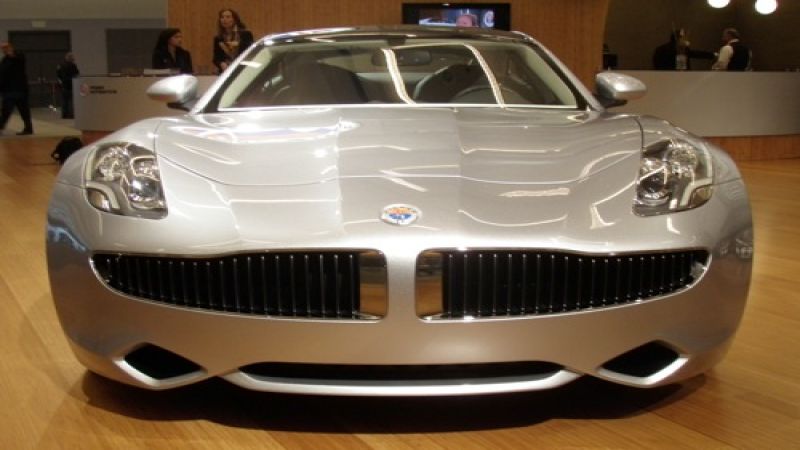





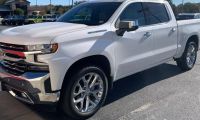
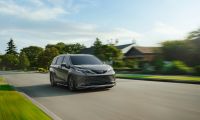
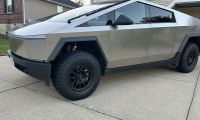
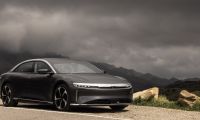
Comments
The Chevy Volt demands
Permalink
The Chevy Volt demands attention. That is the reason it is both loved and hated. This is the year that the Volt will take off as there will be enough made for the first time to sell in big numbers. For Volt enthusiasts the price of the Volt makes senses. For the masses incentives make senses. Car sales mostly make no senses anyway. (Who would buy a $90,000 Viper? A featureless car. No more than 2,000 Vipers were sold in any of the 13 years it has been available! Yet it has not been called a failure because it shows an engineering prowess by Chrysler.) The Volt is also a halo car that shows that GM can make huge advancements in automobile technology and engineering. Once the masses understand the Volt, and drive it, they will buy it in droves. Who won't want a performance car that lets you drive around on your home's electricity instead of gas?
For me, 12,000 all electric, mostly freeway miles in my 2011 Volt with only 23 gallons of gas used in all of 2011.
Go American Products! Go American Auto Industry!
Excellent point JeffU about
Permalink
In reply to The Chevy Volt demands by JeffU (not verified)
Excellent point JeffU about not calling the Viper a failure with little sales. The Volt is a good car and makes sense but the real challenge this year will be to introduce the Cadillac version ConverJ at a premium, have buyers excited about it and lower the price of the Chevrolet Volt. The trick this year again is in lowering the price of PHEV and EVs in general.
With all respect, I challenge
Permalink
With all respect, I challenge the line in the article that read, "even your basic EV can handle at a fraction of operating price than a conventional vehicle does." It's not the operating cost of gasoline vs electric utility charge that counts most in the economic sense, but the total cost of transportation. Those Volts and EVs have a monthly lease of $400-$450. The masses cannnot afford that;and when I can buy a Chevy Volt ECO with 42MPG highway, it's hard to justify the additional expense, at least here in Michigan.
So the idea that folks will drive Volts and Leafs in droves is a pipedream, and will be until the prices come down significantly; and that includes AFTER the taxpayer subsidy is ditched.
With due respect, I challenge
Permalink
In reply to With all respect, I challenge by Frank Sherosky
With due respect, I challenge your challenge to challenge me :)
I can buy a cheap car, put some basic gel pack and get a 40 mile range out of it for less than $5000. If I go a step above, I can get a nicer car and a lithium pack that will get me going 60 to 80 miles at around $10,000 to 13,000. If I buy the Mistubishi I, as mentioned in the article, it's $16,500 for 100 miles. Even where electricity here in California is more expensive then elsewhere in the U.S., I can drive th4ese cars for single digit pennies on the double, i.e. 8 cents a mile, versus 30 and above, depending on what you drive.
No matter how I stack the numbers, if you plan electricity well, it pays off. The again, you can go out crazy and buy solar panels and drive for the price of the loan to buy and install the panels.
I see more solutions than obstacles, then again, this is my nature. Go forward and make it work.
Thanks Frank for your input. Nicolas
Thanks for the optimistic
Permalink
In reply to With due respect, I challenge by Nicolas Zart
Thanks for the optimistic view on electric cars. However, I've been crunching the numbers for a highway conversion, and I get closer to $20,000 for a VW Bug with a 25Kw-hr Thundersky pack (160v @ 160A). I'm factoring in the cost of a 10" Kostov motor and a Soliton Jr., plus all the wires, etc., in addition to the cost of buying a $2000 classic Bug with a couple thousand for rust-proofing and painting, mods for the speedo, etc. All the mods would go towards bullet-proofing the entire car for the 500,000 mile life expected from the series-wound motor. At 300W-hr per mile, I might get 80 miles of range without sacrificing battery longevity. Do you have any advice on how to go about this less expensively? $13,000 would make an electric car like this a no-contest winner, in my book. I'm going to get an electric car, either way. The S might hit the F any time now, and EVs are the ultimate Mad Max transportation, if you've got the solar panels!
A little further down, a fellow mentions the economic difficulty of charging with solar panels. Check out Sun Electric every now and then. The prices for panels have dropped shockingly low. If only we could have a similar breakthrough in battery pricing in the next year.
Challenge away. There are
Permalink
In reply to With all respect, I challenge by Frank Sherosky
Challenge away. There are thousands of EV drivers who have already proven the point. My basic EV is 12 years old now and still costs about $24 per year for service and maintenance with fuel cost of about $.03 per mile. My prior gas vehicle had cost me $4000 to $5000 each year. But you say that is not so important. The government did not help my buy the EV but It cost less than a basic hybrid and I was already stuck spending enough for a technology that gets more expensive every year. I see no reason to start wasting money on gas again.
And who says these EVs are only for "the masses"? There are thousands of car buyers spending more than $30,000 on a well appointed efficient vehicle.
Absolutely Steve, you're
Permalink
In reply to Challenge away. There are by SteveEV (not verified)
Absolutely Steve, you're making the point here. What can you say about a car that basically requires the tires be inflated properly, maybe change them once and wind shield wiper liquid for the first 60,000 miles? No oil change, or oil filters, spark plugs (for those of us who still have to), no "scheduled" maintenance, etc.
Of course, we shouldn't fool ourselves and I suspect, less agile carmakers will find ways to bring your EVs in for a "tune up". If they are smart, thjey wioll treat them more as computers, offering intelligent updates and upgrades, such as better programs for the controllers, etc.
Just as a side note, I spent close, if not over $400 when two of our cars needed an oil change with new filters, one of them needed a new air filter as well as our third car. Something we won't see with electric cars and hopefully won't let carmakers get away with invented scheduled maintenance.